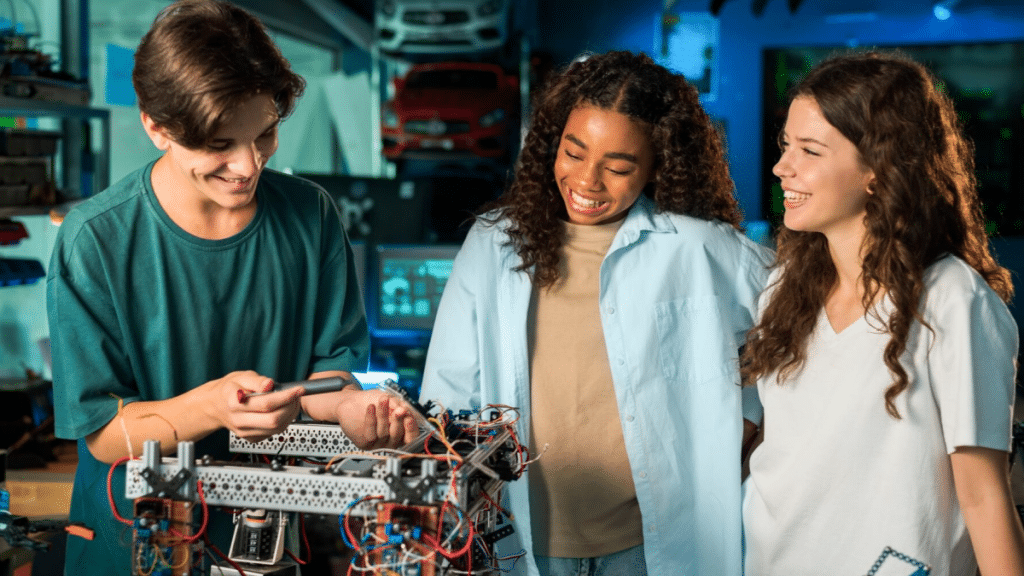Electrical training plays a crucial role in preparing individuals for the complex and dynamic field of electrical work. Simulation has emerged as a valuable tool to enhance the effectiveness of this training, providing practical, hands-on experience in a controlled environment. Simulation is more than just a buzzword; it’s a game-changer in how we approach learning and skill development.
Benefits of Simulation-Based Training
Simulation-based training offers several key advantages, making it a preferred method for electrical training.
Improved Safety
Safety is important in any electrical work. Simulation allows learners to experience and mitigate real-world risks without actual hazards. By replicating hazardous scenarios, trainees can develop the skills to handle emergencies safely.
Enhanced Skill Development
Traditional learning often falls short in practical application. Simulation bridges this gap by offering realistic problem-solving scenarios. Trainees can apply theoretical knowledge to hands-on situations, fostering a deeper understanding of electrical systems.
Cost-Effective Training
Conventional training methods often incur high material and equipment costs. Simulation minimizes these expenses by creating a virtual environment, reducing the need for physical resources. Additionally, it minimizes downtime for equipment maintenance, making training more efficient.
Increased Accessibility
Virtual training breaks the barriers of time and space. With simulation, learners can engage in training anytime, anywhere. This flexibility is particularly beneficial for those unable to access physical training facilities.
Simulation Technologies in Electrical Training
Three primary simulation technologies are transforming electrical training: Virtual Reality (VR), Augmented Reality (AR), and Computer-Based Simulations.
Virtual Reality (VR)
VR immerses learners in realistic environments, allowing them to interact with electrical systems as if they were physically present. This immersive experience enhances engagement and knowledge retention.
Augmented Reality (AR)
AR overlays digital information in the real world. AR provides hands-on experiences in electrical training by integrating digital elements into physical spaces, offering a unique and interactive learning approach.
Computer-Based Simulations
Software simulations enable learners to interact with virtual electrical systems through computer programs. These simulations are accessible and allow for experimentation in a controlled environment.
Challenges and Solutions
As an educational tool, simulation holds significant promise, yet its adoption is not without its challenges. Here are the hurdles and insightful solutions to ensure a smoother integration into educational practices.
Overcoming Resistance to Change
One primary challenge in adopting simulation in education is overcoming resistance to change, particularly from individuals accustomed to traditional training methods.
Cultural Shifts
Institutions should actively support and promote the benefits of simulation-based learning to facilitate acceptance. Administrators play a crucial role in communicating the advantages and fostering a culture of openness to new teaching methodologies.
Educator Training
Resistance often stems from unfamiliarity. Offering comprehensive training programs for educators equips them with the necessary skills and insights to utilize simulation tools effectively. Hands-on workshops and peer collaboration can demystify the technology and build confidence.
Technology Integration Issues
Ensuring seamless integration of simulation tools into educational settings is a crucial aspect that poses challenges.
Compatibility Challenges
The diversity of simulation tools often leads to compatibility issues. Industry-wide standardization efforts can streamline technology integration, ensuring that various platforms and tools can work cohesively. This simplifies the adoption process for educational institutions.
Technical Support Infrastructure
Establishing dedicated technical support teams within educational institutions is essential. These teams can provide timely assistance, troubleshoot issues, and offer guidance, ensuring a smooth experience for educators and students.
Continuous Training and Updates:
Given the rapid evolution of simulation technologies, implementing mandatory, ongoing training programs is crucial. This ensures that educators stay abreast of the latest advancements, maximizing the potential of simulation tools to enhance the learning experience.
Simulation as a Tool for Continuous Learning
In the rapidly evolving electrical industry, continuous learning is a must. Simulation provides a platform for lifelong learning, allowing professionals to stay current with technological advancements and refine their skills.
One game-changer in electrical training is Infinispark, which delivers top-notch electrical equipment that elevates the simulation experience to new heights.
Sparking Success Through Simulation
The role of simulation in electrical training cannot be overstated. As technology continues to evolve, so does the potential for simulation to revolutionize how people prepare for the challenges of the electrical industry.
